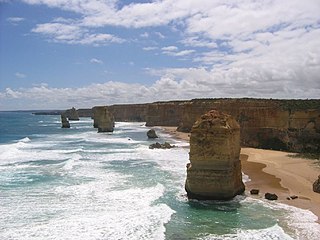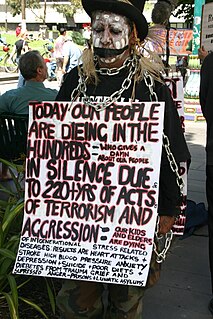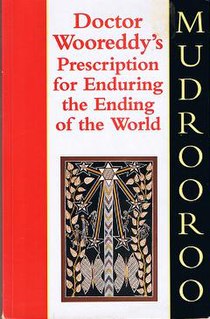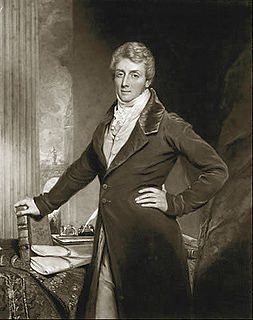
The Western District comprises western regions of the Australian state of Victoria. It is said to be an ill–defined district, sometimes incorrectly referred to as an economic region,. The district is located within parts of the Barwon South West and the Grampians regions; extending from the south-west corner of the state to Ballarat in the east and as far north as Ararat. The district is bounded by the Wimmera district in the north, by the Goldfields district in the east, by Bass Strait and the Southern Ocean in the south, and by the South Australian border in the west. The district is well known for the production of wool. The most populated city in the Western District is the Ballarat region, with 96,940 inhabitants.
The office of the Protector of Aborigines was established pursuant to a recommendation contained in the Report of the Parliamentary Select Committee on Aboriginal Tribes, of the House of Commons. On 31 January 1838, Lord Glenelg, Secretary of State for War and the Colonies sent Governor Gipps the report.
The following lists events that happened during 1838 in Australia.
The following lists events that happened during 1881 in Australia.
The Flinders Island Chronicle was an Australian newspaper founded in September 1836 and running until December 1837. It was jointly written and edited by Thomas Brune and Walter George Arthur. Twenty nine editions are currently known of. It is notable as being the first newspaper produced by Indigenous Australians.
The history of the Aboriginal inhabitants of Western Australia has been dated as existing for 50-70 thousand years before European contact. This article only deals with documented history from non indigenous sources since European settlement in Perth.

Djadjawurrung or Dja Dja Wurrung, also known as the Jaara or Jajowrong people and Loddon River tribe, is a native Aboriginal tribe which occupied the watersheds of the Loddon and Avoca rivers in the Bendigo region of central Victoria, Australia. They were part of the Kulin alliance of tribes. There were 16 clans, which adhered to a patrilineal system. Like other Kulin peoples, there were two moieties: Bunjil the eagle and Waa the crow.
The Convincing Ground Massacre was a skirmish between the indigenous Gunditjmara people Kilcarer gundidj clan and local whalers based in Portland, Victoria in South-Eastern Australia. Tensions between the two groups had been building since the establishment of the town as a whaling station some five years previously, however, around eighteen thirty three or eighteen thirty four, a dispute over a beached whale would cause events to escalate.

Doctor Wooreddy's Prescription for Enduring the Ending of the World is an historical novel by Mudrooroo Nyoongah, first published in 1983. Though the protagonist Wooreddy is fictional, the novel deals largely with the real-life George Augustus Robinson, who was sent by Great Britain to Tasmania to act as a conciliator between British settlers and the Tasmanian Aborigines. It also deals with his relationship with "Trugernanna," based on the real-life Trugernanner, the last full-blooded Tasmanian Aborigine. Throughout the narrative the violence of colonisation is documented and explored: "a clear parallel is established between the rape of the Tasmanian Aboriginal women and the metaphorical rape of their land, sacred sites and heritage."
Murdering Gully, formerly known as Puuroyup to the Djargurd Wurrung people, is the site of an 1839 massacre of 35-40 people of the Tarnbeere Gundidj clan of the Djargurd Wurrung in the Camperdown district of Victoria, Australia. It is a gully on Mount Emu Creek, where a small stream adjoins from Merida Station.

Edward Stone Parker (1802–1865) was a Methodist preacher and assistant Protector of Aborigines in the Aboriginal Protectorate established in the Port Phillip District of colonial New South Wales under George Augustus Robinson in 1838. He established and administered the Franklinford Aboriginal Protectorate Station in the territory of the Dja Dja Wurrung people from January 1841 to the end of 1848.
Gary Presland is an Australian archaeologist and writer who studied history at La Trobe University 1973-76, and archaeology at the University of London, 1977-79. He was a staff member of the Victoria Archaeological Survey from 1983 to April 1988; his research interests are in the Aboriginal and natural history of Melbourne. One important contribution was the transcription and editing of the unpublished journals of George Augustus Robinson, Chief Protector of Aborigines in the Port Phillip District, 1839-1849. He was awarded the degree of Doctor of Philosophy at the University of Melbourne in 2005, for his reconstruction of the pre-European natural history of Melbourne.

Aboriginal Victorians, the indigenous Australians of Victoria, Australia, occupied the land for tens of thousands of years prior to European settlement. Aboriginal people have lived a semi-nomadic existence of fishing, hunting and gathering, and farming eels in Victoria for at least 40,000 years.
Ian D. Clark is an academic historian and Toponymist whose primary work has focused on Victorian Aboriginal history, aboriginal toponymy and the frontier conflict between Indigenous Australians and immigrant settlers during the European settlement of Victoria, Australia.
Bruny Island Tasmanian, or Nuenonne ("Nyunoni"), a name shared with Southeast Tasmanian, is an aboriginal language or pair of languages of Tasmania in the reconstruction of Claire Bowern. It was spoken on Bruny Island, off the southeastern coast of Tasmania, by the Bruny tribe.
The Rufus River Massacre was a massacre of Aboriginals that took place in 1841 along the Rufus River near Wentworth, Australia. It was the result of six months of guerrilla warfare by the local Aboriginal people (Maraura), who blocked an overlander route through their land. The original cause of much of the trouble with the Aboriginal groups was the Europeans engaging in sexual relations with the women without giving the food and clothing promised first. That initiated an escalating cycle of conflicts, which eventually included the Aboriginal groups stealing thousands of European sheep.

Tunnerminnerwait (c.1812–1842) was an Australian aboriginal resistance fighter and Parperloihener clansman from Tasmania. He was also known by several other names including Peevay, Jack of Cape Grim, Tunninerpareway and renamed Jack Napoleon Tarraparrura by George Robinson.

James Munro (c1779-c1845) was a British convict who was transported to Australia, and established himself as a farmer on Preservation Island, Tasmania, and community leader of the region's community of European seal hunters, known as "King of the Eastern Straits.










